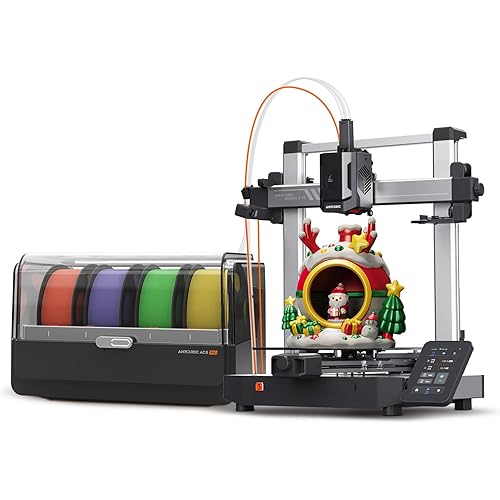R QIDI TECHNOLOGY i Fast 3D Printer, Industrial Grade Structure, with Dual Extruder for Fast Printing, Super Large Printing Size 330×250×320mm










Notify me when this product is back in stock
Buy Now, Pay Later
- – Up to 36-month term if approved
- – No impact on credit
- – Instant approval decision
- – Secure and straightforward checkout
Payment plans are offered through our trusted finance partners Klarna, Affirm, Afterpay, Apple Pay, and PayTomorrow. No-credit-needed leasing options through Acima may also be available at checkout.
Learn more about financing & leasing here.
This item is eligible for return within 30 days of receipt
To qualify for a full refund, items must be returned in their original, unused condition. If an item is returned in a used, damaged, or materially different state, you may be granted a partial refund.
To initiate a return, please visit our Returns Center.
View our full returns policy here.
Recently Viewed
Features
- Faster printingFully industrial-grade structure, using the second-generation Qidi dual Z-axis structure, all of the original motion structure is upgraded to linear guides, with the high temp extruder, the filament extruding is faster and smoother, the printing accuracy is higher .The printing speed is increased by 20%, it is set to print easily at 100cc per hour.
- Freedom in the choice of the filament Qidi iFast can print almost all kinds of filaments which suitable for FDM 3D printers on the market, such as PLA ,PLA+ ,ABS ,PETG, NYLON,etc. The iFast 3d printer equipped with a heated chamber, which can be heated to 60C. The excellent mechanical structure can produce more robust manufacturing-grade parts.
- Freedom in manufacturing of the complex parts Qidi iFast is equipped with automatic dual extruder, which can automatically adjust the left and right extruder up and down according to the software. With the PVA (water-soluble) support, it is very suitable for printing manufacturing-level parts with complex structures and realizing precision manufacturing.
- All metal high temp extruder Compared with the normal brass nozzles which on the market, it is more durable and prints smoother. The iFast 3d printer is pre-installed with dual extruder, and the print size is 330250320mm.
- Excellent user experience, large UI interfaceIts equipped with self-developed QIDI slicing software, two modes can be selected: normal mode and expert mode. The normal mode is suitable for novices, the parameter system has been intelligently set, no other operations are required, it is very simple. Expert mode is suitable for experienced users, who can deeply participate in modifying parameters and personalized printing models.
Brand: R QIDI TECHNOLOGY
Material: Pla
Color: White+Black
Product Dimensions: 20.47"D x 28.74"W x 24.41"H
Item Weight: 93.5 Pounds
Product Dimensions: 28.74 x 20.47 x 24.41 inches
Item Weight: 93.5 pounds
Item model number: IFAST2101
Date First Available: January 5, 2021
Manufacturer: QIDI TECHNOLOGY CO.LTD
Frequently asked questions
To initiate a return, please visit our Returns Center.
View our full returns policy here.
- Klarna Financing
- Affirm Pay in 4
- Affirm Financing
- Afterpay Financing
- PayTomorrow Financing
- Financing through Apple Pay
Learn more about financing & leasing here.
Similar Products
Top Amazon Reviews






















